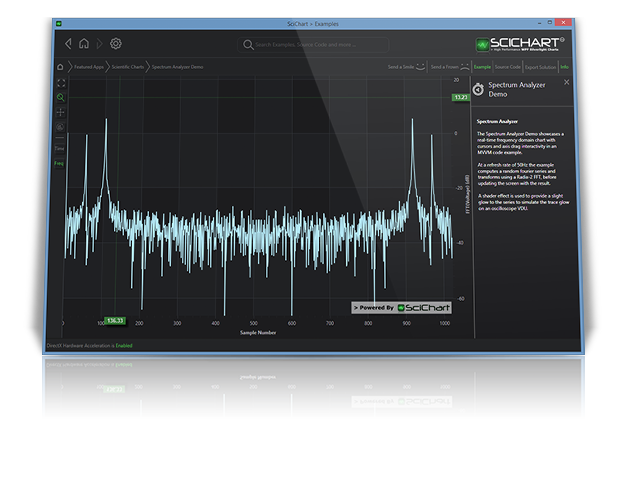Now-a-days, many websites are being created and these sites need to be developed and modified to an expert level. For the development, graphics and media are being highly used and then the websites are then able to satisfy a generation of people. A lot of technologies are being used for these developments to keep up with the increasing expectation. WPF is an advanced level of the development and it allows building interfaces that includes media, two and three dimensional graphics, Web-like characteristics, animations and much more.
Creating two dimensional and three dimensional charts is one of the most common part of the computer graphics. These types of charts have wide applications including mathematical, economical and physical functions in your daily life and those are WPF charts. Whether you are an engineer, teacher, student or analyst, you need to deal with these types of WPF charting applications. WPF charts can perform exclusively by directx drawing; intelligence data transform algorithms and a mixture of extensive end to end performances. WPF charts contain markup Language (XAML). XAML can be defined as a set of XAML elements such asButton, TextBox, Label. It also contains animations, 2D graphics, 3D graphics, videos and audios, text and documents and many more.

Animations: The ability to animate the elements can be very useful and it can give better feedback to the users for instance. It helps to create interfaces that engage the users of those by directing their attention. The animations can be included with different shapes, images, buttons and more. To maintain these animations the WPF charts provide the storyboard class. Each storyboard contains one or more timelines and each timeline contains one or more animations. A storyboard element is must to explain an XAML. Sometimes, high property storyboard of a WPF chart contains double animation elements. The complexity of animations depends on how and when it is being used in the WPF charts but the main factor is to allow developers to create a user interface for better feedback.
2D graphics: In the very past times 2D graphics relied on Graphics Device Interface (GDI) and then comes GDI+. But, that also creates problem for creating 2D graphics in WPF charts. Then a new form of support come and is XAML. The main advantage of XAML is, both 2D and 3D graphics can be created in XAML for WPF charts. For 2D graphics, WPF charts include some applications that can use to create images. They are- Line, Ellipse, Rectangle, Polygon, Polyline and Path. Combining different aspects is a key thing of WPF charts. As example it can display an Image inside a Rectangle, place an Ellipse within a Button, and much more. Another 2D graphics form of WPF chart is geometries that include LineGeometry, RectangleGeometry, EllipseGeometry, and PathGeometry.
3D graphics: In the graphics area 3Dimensation is very renowned and effective graphics which is served by WPF charts. It is not use in common graphics in running graphics tend. Generally skilled people in graphics can make it but it is not so much easy for any software, but WPF chart is a easiest format for the 3Dimensation graphics. 3d development classically depends on Direct 3D API lacking WPF. But WPF supports to 3D graphics build and use for the developers and the readers. Viewport3D control custom 3D graphics display in WPF. This control basically runs a window the application describes into the three-dimensional world. A developers describes more or one models to create 3D scene, then it can particulars how it be struck and viewed. It can be particulars using XAML code. Describe a model WPF delivers GeometryModel3D class that lets major the model’s form.
Text and document: All of the websites and user interfaces contain more or less text. Reading text on a screen and reading a printed page is different in the view of a reader. Reading a printed page is comfortable but reading an on-screen text doesn’t feel comfortable. WPF charts work on this as it makes the on-screen pages as readable as a printed page. clearType is a technology of the WPF charts that makes up each pixel on modern display screens and it allows to look the screen smoother to the viewer’s eye. Another improved version of this is known as Glyphs class. WPF charts also contain ligatures, where a group of characters are being replaced by a single connected image. Adding this to the on-screen makes the reader more comfortable to read the text.
Both texts and documents are important, but improving those also depends on how documents are displayed. WPF charts allow two types of document: fixed documents and flow documents. The fixed format documents can be specified using XAML’s FixedDocument element. To display the fixed documents WPF charts provides the documentViewer control. This control lets the reader more backward and forward in the document. The flow documents can adjust how a document’s text and graphics are displayed. To display a FlowDocument, WPF chart includes different controls. They are- FlowDocumentPageViewer, FlowDocumentScrollViewer and FlowDocumentReader. FlowDocumentReader is the combination of both FlowDocumentPageViewer and FlowDocumentScrollViewer.

Hey,
Great post.I got some basic idea about WPF charts activities from this blog.
LikeLike